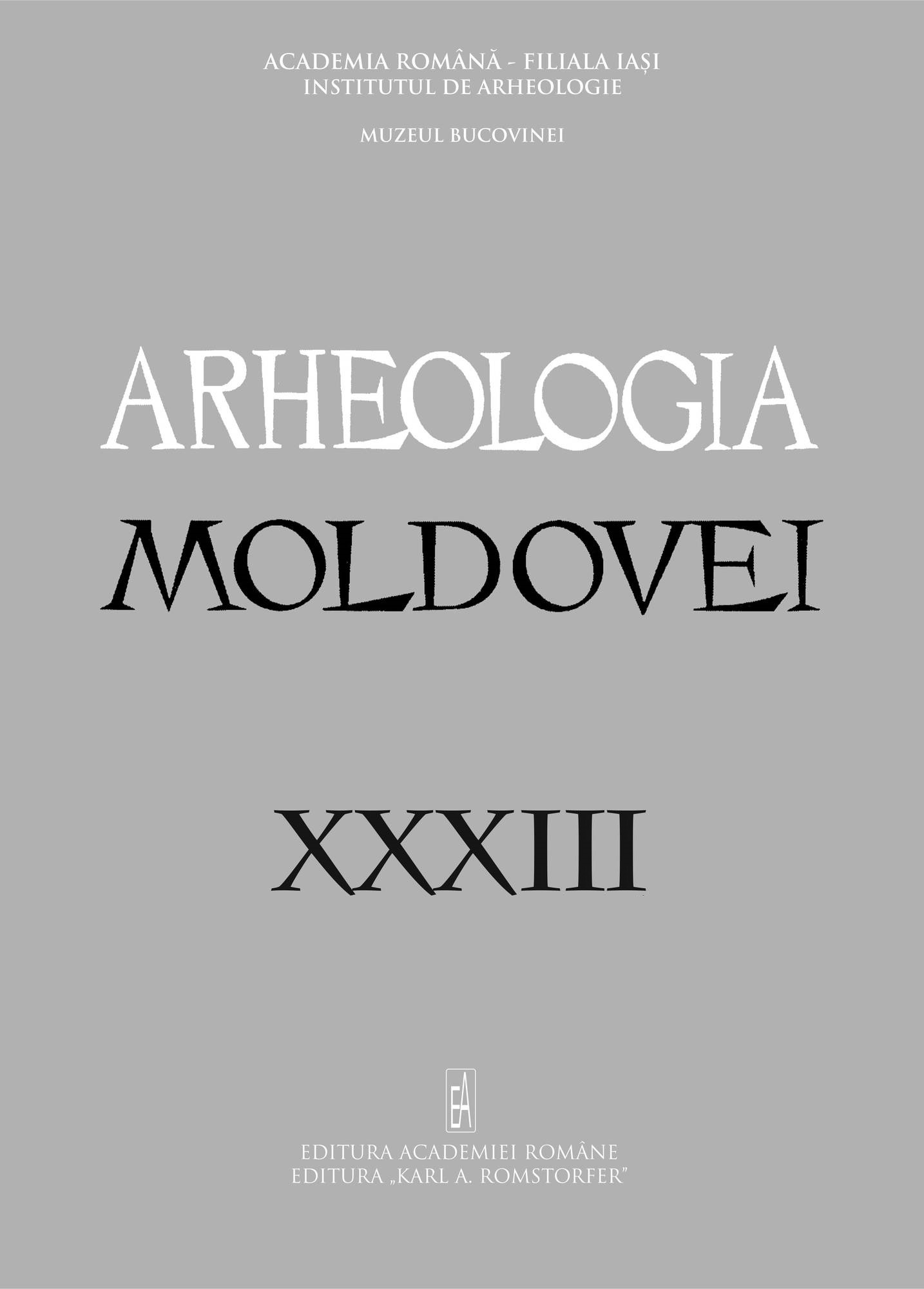MORMINTE ORIENTATE VEST–EST DIN NECROPOLA DE TIP SÂNTANA DE MUREŞ–ČERNJACHOV DE LA BRĂVICENI1. CONTRIBUŢII LA PROBLEMA RĂSPÂNDIRII CREŞTINISMULUI ÎN GOTHIA
East-west oriented burials in the Sântana de Mureş-Černjachov cemetery of Brăviceni as evidence for the spreading of Christianity in Gothia)
Author(s): Vlad VornicSubject(s): Christian Theology and Religion, History, Archaeology, Cultural history, Ethnohistory, Ancient World, Religion and science
Published by: Editura Academiei Române
Keywords: burials; Sântana de Mureş-Černjachov; Christianity; Gothia
Summary/Abstract: The Brăviceni cemetery (Orhei county, Republic of Moldova) is among the important archaeological discoveries of a Sântana de Mureş-Černjachov type in the Prut-Nistru area. Discovered in the winter of 1977, due to some building activites, this funeral complex was investigated by Vasile Grosu in 1977, 1980 and 1981. He discovered 181 (?) graves and among them 1 of cremation and 180 of inhumation, as well as 53 pits with cult characteristics. Like other Sântana de Mureş-Černjachov necropolis, the majority of the inhumation graves at Brăviceni belong to two main orientations, W–E and N–S, respectively, each of them showing slight deviations. The proportions of the two categories of graves differ very much, the W–E oriented ones being more numerous. It was established that, of 160 funeral complexes with a precise orientation, 89, that is, 55,6%, are W–E oriented, and 56, representing 35%, are N–S oriented. In addition, 6 graves were placed NE–SW, 6 – NW–SE, 2 – E–W and 1 – S–N. The depth of the Brăviceni W–E oriented graves vary very much, from 0.4 to 2.7 m, with reference to the present surface of the ground. By calculating the average depths of the graves with a W–E orientation and of those oriented N–S, we have established that they are not bigger for the first category of inhumations, although the difference among them is not as clear as it is in other similar necropolis. The problematic of the W–E oriented Sântana de Mureş–Černjachov culture graves is of special interest for the research of some spiritual phenomena, which took place, during the 4th century CE and at the beginning of the next, among these numerous communities most which were probably ethnically mixed. It is a known fact that W–E oriented graves were unearthed already during the first investigations in the cemeteries of both eponymous sites, Sântana de Mureş and Černjachov, respectively, as well as in the Romaški necropolis. However, graves of that type have been found and interpreted as a separate funerary group only as late as the 1950s, when E. Symonovič studied and published the data from excavations in the Danilova Balka and Gavrilovka cemeteries. As far as we are concerned, the hypothesis of a Christian belonging of inhumations belonging to the Sântana de Mureş–Černjachov culture that were described above appears to be the most plausible one, although finds that could decisively sustain such a conclusion are still missing. The orientation of burials in keeping with a W–E axis and the general absence of food offerings in the graves of Gothia and of the former Dacia province is the main argument at hand that supports our conclusions. Another important argument indicating a Christian belonging for W–E oriented graves of the Sântana de Mureş–Černjachov culture is their dating. On the basis of recent finds, the earliest W–E oriented graves appeared approximately in the middle of the 4th century CE, they became more frequent in the following decades, and especially towards the end of that century and during the next. Although, in a limited number, there are literary attestations of the conversion to Christianity of „barbarians” north of the Lower Danube in the period after the great invasion of Huns (375–376). The sources under discussion indicate that Christian missionary work continued successfully in that area towards the end of the 4th century CE and at the beginning of the next. The written documents regarding the spreading of Christianity in Gothia could be considered as solid arguments in favor of the idea that the W–E oriented graves of the Brăviceni cemetery and of other cemeteries of the Sântana de Mureş–Černjachov culture belonged to Christians. Nevertheless, several aspects linked to those funerary complexes, such as ethnic and chronological affiliations, still remain subjects for future investigations.
Journal: Arheologia Moldovei
- Issue Year: 33/2010
- Issue No: 1
- Page Range: 189-216
- Page Count: 28
- Language: English, Romanian

